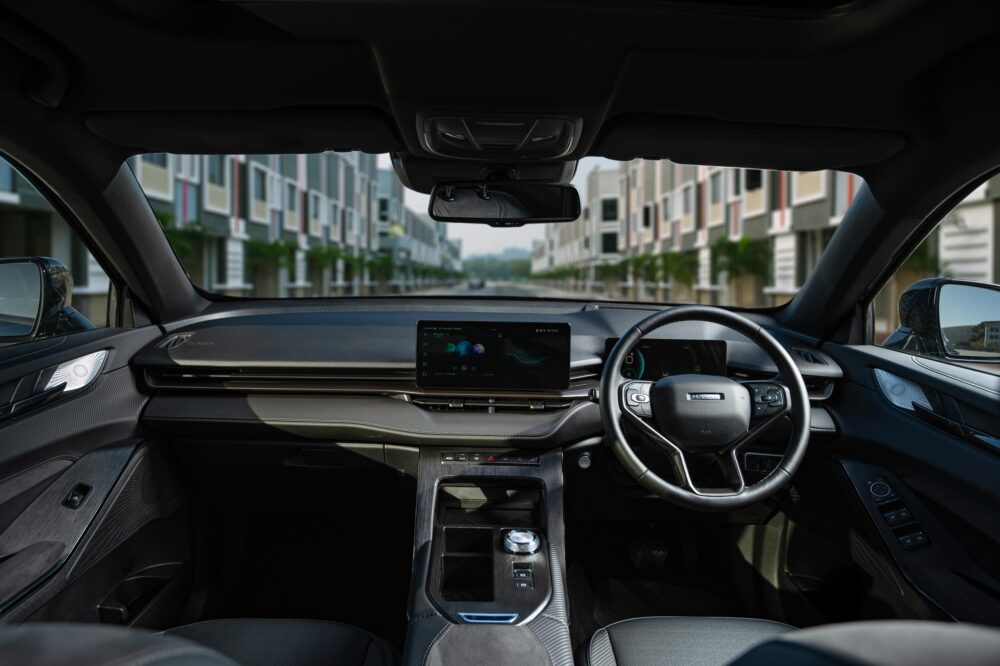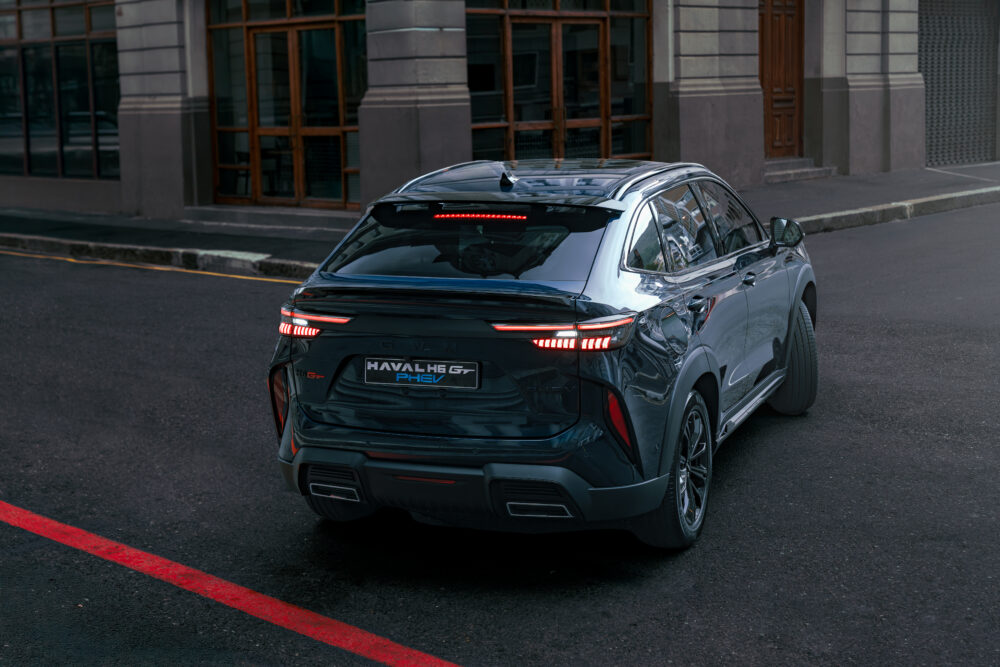Sound or silence? The Haval H6 GT PHEV costs more than its petrol counterpart, but consumers save money in the long run
When the GWM Haval H6 GT arrived in South Africa in 2022, it turned many heads due to its Lamborghini Urus-esque looks.
It got a refresh in 2024, and the plug-in hybrid electric (PHEV) variant was released in June 2025 alongside the new H6.
Chinese manufacturers have started bringing in a ton of PHEVs since BYD released the Sealion 6 in April, after many South Africans were not too happy with the fuel consumption of their vehicles.
The PHEVs eliminate that trouble and give drivers many more kilometres. Charging is also cheaper than filling up with fuel, so if the driver is constantly charging the vehicle, it will work out much more affordable for them to own a PHEV than an internal combustion engine (ICE) vehicle.
However, there is a catch. The PHEV variants cost significantly more than their ICE compatriots.
It’s the same when it comes to the Haval H6 GT. The ICE variant, with a 2-litre turbocharged petrol engine, is priced at R665 950, while the PHEV is priced at R799 900.
The difference between the two is R133 950.
I had both of them on test across separate weeks, and I was curious to see if it is really worth spending over R130 000 to get into the PHEV model.
In terms of comfort and aesthetics, there’s not much of a difference. Both vehicles have it all: panoramic sunroofs, heated seats, big infotainment displays and digital instrument clusters.
Both have the alcantara-trimmed seats and carbon fibre along the dashboard to make the car feel as sporty on the inside as it is on the outside.
But I knew that. What was going to set the two vehicles apart was the ride quality and running costs.
 The interior of the Haval H6 GT
The interior of the Haval H6 GT
Ride quality
The ICE version of the H6 GT has a 2-litre turbocharged petrol engine that produces 155kW of power and 325Nm of torque.
It is also all-wheel-drive, which makes the car’s handling incredible. The vehicle certainly has enough power, and it produces a beautiful noise from the exhaust that is worthy of a sports SUV.
The drive is smooth, but certainly not subtle. It’s not meant to be. It’s meant to be thrilling.
When it comes to the PHEV, it is a slightly different experience.
The PHEV has a 1.5-litre turbocharged petrol engine, coupled with two electric motors, producing a total of 321kW of power and 762Nm of torque.
It has an electric driving range of 180km and a combined range of 1000km.
While it is far quicker than the petrol variant, it doesn’t have the satisfying engine sound of the petrol variant. Instead, you are treated to a faster but calmer drive in the PHEV.
It feels much smoother and is incredibly steady and specific at higher speeds. The handling is also very comfortable, and the PHEV can go from 0-100 km/h in just 4.9 seconds.
Now, of course, in terms of speed and comfort, the H6 GT PHEV was always going to win. It has far more power and, thanks to the electric motors, instant torque for acceleration, but it also feels more certain than its ICE compatriot.
However, to me, that is not enough to justify the price difference just yet.
 Urus-esque: The Haval H6 GT resembles the Italian SUV
Urus-esque: The Haval H6 GT resembles the Italian SUV
Running costs
The thrill of the ICE H6 GT doesn’t end with the sound from the exhaust. Your heart races even more when you look at the fuel consumption.
Haval’s modest claim of 8.4 litres/100km is just too far off the mark. I could not get the car under 10 litres/100km no matter how hard I tried.
At the end of the day, you are driving a sports SUV, which means that you are going to want to push the throttle a little bit instead of driving to save fuel.
With the petrol price sitting at R21.55/litre and Haval’s 60 litre fuel tank, you can expect to pay R1293 for a full tank and get 600-650km off a tank depending on how you drive. It could even be less as the car drinks fuel in urban settings.
When it comes to the PHEV, the vehicle has 55 55-litre tank capacity and a 35.4kWh battery. That means that it will cost you R1185.25 to fill the tank up, and if you charge at a GridCars fast charging station, the cost per kWh is R7.35 for DC charging, then it will cost you R260.19 to charge the car completely. That is a total of R1445.44.
However, if you charge at home where the cost per unit of electricity is cheaper, then you are looking at just above R1300 for a full charge and full tank.
The initial cost to get both cars to full capacity is higher for the PHEV, but after that, things really get technical.
With the ICE variant, it’s simple. You get 600km on a full tank, and when that is done, you pay R1293 to fill up again.
With the PHEV, if you constantly charge it, then it works out cheaper and delays the amount of time you need to fill your tank up again.
For example, I did not charge the car that week. I did 550km in the week and was still sitting with another 550km of range.
I average around 500km a week. That means that I would have to fill the ICE variant up once a week, and I would have to refill and recharge the PHEV twice a month if I am only going to charge the vehicle once a month.
Over a year, that means that I would have filled the ICE variant 52 times and only charged and filled the PHEV 26 times.
So, when it comes to the ICE variant, I am looking at R67 236 in petrol per year, while with the PHEV, I can expect to spend R37 570 per year.
It must be noted that this is the absolute maximum that you can spend on running costs of the PHEV. If you charge the car more often, then that figure will come down.
Cars are usually financed over five-year periods. Over one year, the running costs on the PHEV is R29 666 less than the ICE variant, and over five years, it amounts to R148 330.
The PHEV is priced R133 950 more than the ICE variant.
Verdict
While I found both products to be exceptional from GWM, the PHEV will ultimately save you money over a longer period while also giving you more power and better driving.
You will also feel a lot better when looking at your instrument cluster and seeing extremely low fuel consumption figures, but to answer the question asked in the headline, the PHEV will save you money and is also the better option between the two variants.